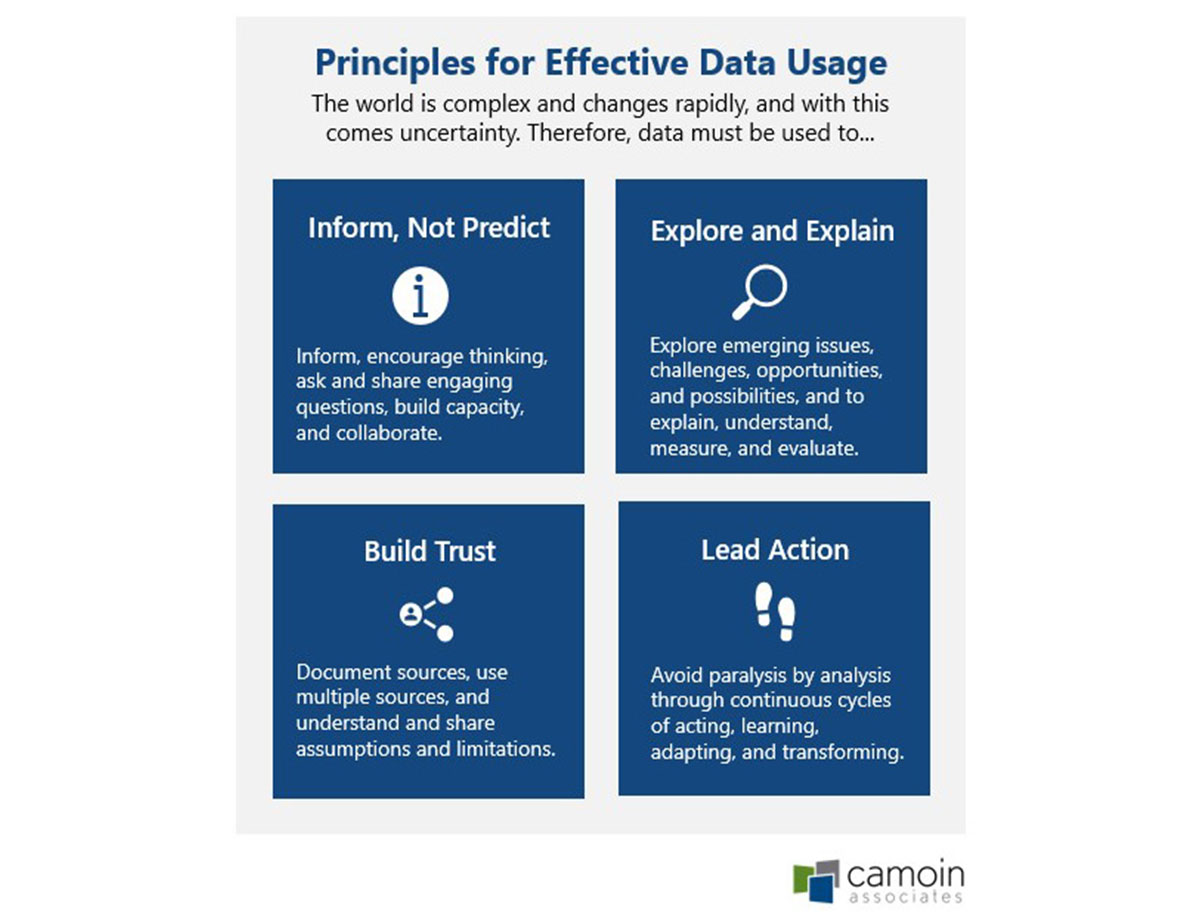 Data and analytics are critical to a strategic planning process. In addition to providing guidance on trends, challenges, and opportunities, if used properly they can support well-informed participants, build trust in the process, and generate engaging dialogue. All this then leads to an increased likelihood that strategic planning will lead to actions.
Data and analytics are critical to a strategic planning process. In addition to providing guidance on trends, challenges, and opportunities, if used properly they can support well-informed participants, build trust in the process, and generate engaging dialogue. All this then leads to an increased likelihood that strategic planning will lead to actions.
There are many types of analytics that support the strategic planning process. The foundational analytics most commonly used for economic development strategic planning include:
- Economic Base: Employment, establishments, wages, labor market, and occupations
- Demographics and Socioeconomic: Population, income, education, and demographic characteristics of the population
- Targeted Industry Sectors and Clusters: Historic and projected trends in industry sectors, groups, and clusters, including employment, establishments, sales, wages, and occupations
- Business Intelligence and Lead Generation: To support business attraction
- Innovation and Entrepreneurship: Research and development, venture capital, patents, technology transfer, and start-ups
- Supply Chain: Analysis of upstream (buy from) and downstream (sell to) relationships and by industry
- Workforce: Current and future workforce supply and demand, gaps, labor market, education levels and completions, and occupation and skills analysis
- Market Feasibility: Economic market supply and demand
- Financial Feasibility: Cost vs. benefits, return on investment, and can the project be financed
- Economic Impact: Impact in terms of jobs, sales, revenues loss and gains from a development or change in economic activity
- Fiscal Impact: Impact on government financial conditions (revenues vs. costs)
- Sensitivity Analysis: Demonstrating need and impact of an economic incentive
- Competitive Analysis: Comparison of one area to another to assess competitiveness for investment
Beyond these foundational analytics, it has become increasingly important to use and integrate data and analytics that help us understand and prepare for a rapidly changing environment that characterizes our culture and economy today. Foresight analytics and strategic foresight are great examples and should be integrated into the process to make results more adaptive to future change.
In its simplest form, strategic foresight involves:
- Scanning, researching, and brainstorming recent, current, and possible emerging trends
- Developing possible (not necessarily probable) scenarios
- Considering and discussing how these scenarios and trends might play out and what might happen if they do; considering how they might be connected, and determining how you can best prepare to either leverage or avoid them
In addition to an ever-changing and complex environment, there are many applied data challenges that can impact analytics, including:
- The North American Industry Classification System (NAICS) and Standard Occupation Classification System (SOCS) have limitations, and not all industries and jobs are easy to define.
- There are geography limits and challenges, including unavailable data and custom geographies (e.g., small communities and rural areas), plus not all data will be available at all levels.
- The years you pick matter and different years can produce different results (e.g., when there is a shock such as COVID-19 or the Great Recession). Also, geographic definitions can change over time making data inconsistent.
- Data is imperfect and might not be available for what you want to measure (i.e., fishing employment data is not reported, so you have to use a proxy of licenses issued instead).
- Rapid changes in economy and culture creating a need for new data not previously available (e.g., e-commerce, remote work, automations, etc.).
- Lack of analytics capacity within organizations and systems.
In the course of my work on strategic planning, I have established principals for data analytics and usage in response to this. They are as follows:
 These principles help prevent a strategic planning process from getting stuck in “paralysis by analysis.” They also help a process maintain focus and lead to implementable actions. I apply these principles not just internally while conducting the analytics, but also communicate them to participants and stakeholders throughout the process.
These principles help prevent a strategic planning process from getting stuck in “paralysis by analysis.” They also help a process maintain focus and lead to implementable actions. I apply these principles not just internally while conducting the analytics, but also communicate them to participants and stakeholders throughout the process.
A final note on the use of data and analytics in strategic planning: Analyses should not be considered a one-off event or process. Data and analytics capacity is a core capacity for project and initiative success. It is important to build this capability within a continuous cycle of paying attention to trends and possibilities; analyzing for understanding; strategizing for framing action; and assessing progress to be able to adapt and pivot as needed.
More Resources
For more information and examples on this topic, I have prepared slide decks along with some other helpful strategic planning-related resources for your use. Check out my Economic Development Strategic Planning Resources web page.





